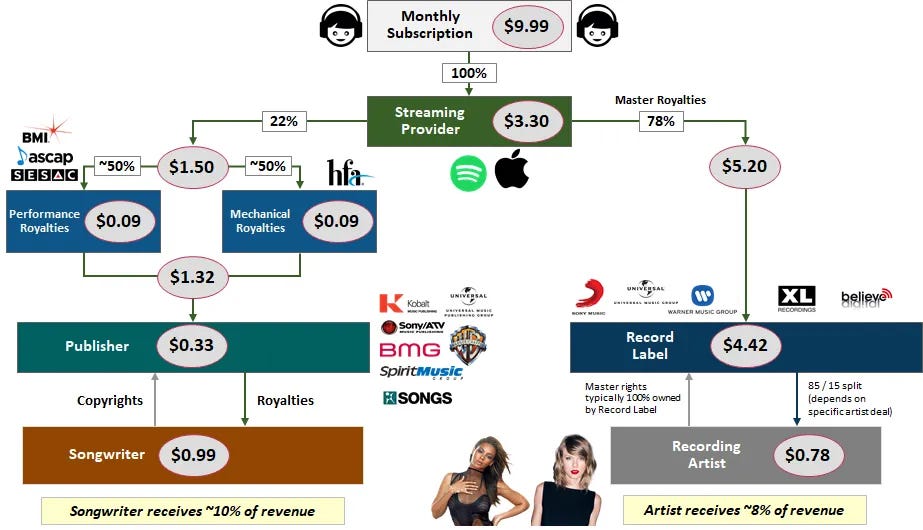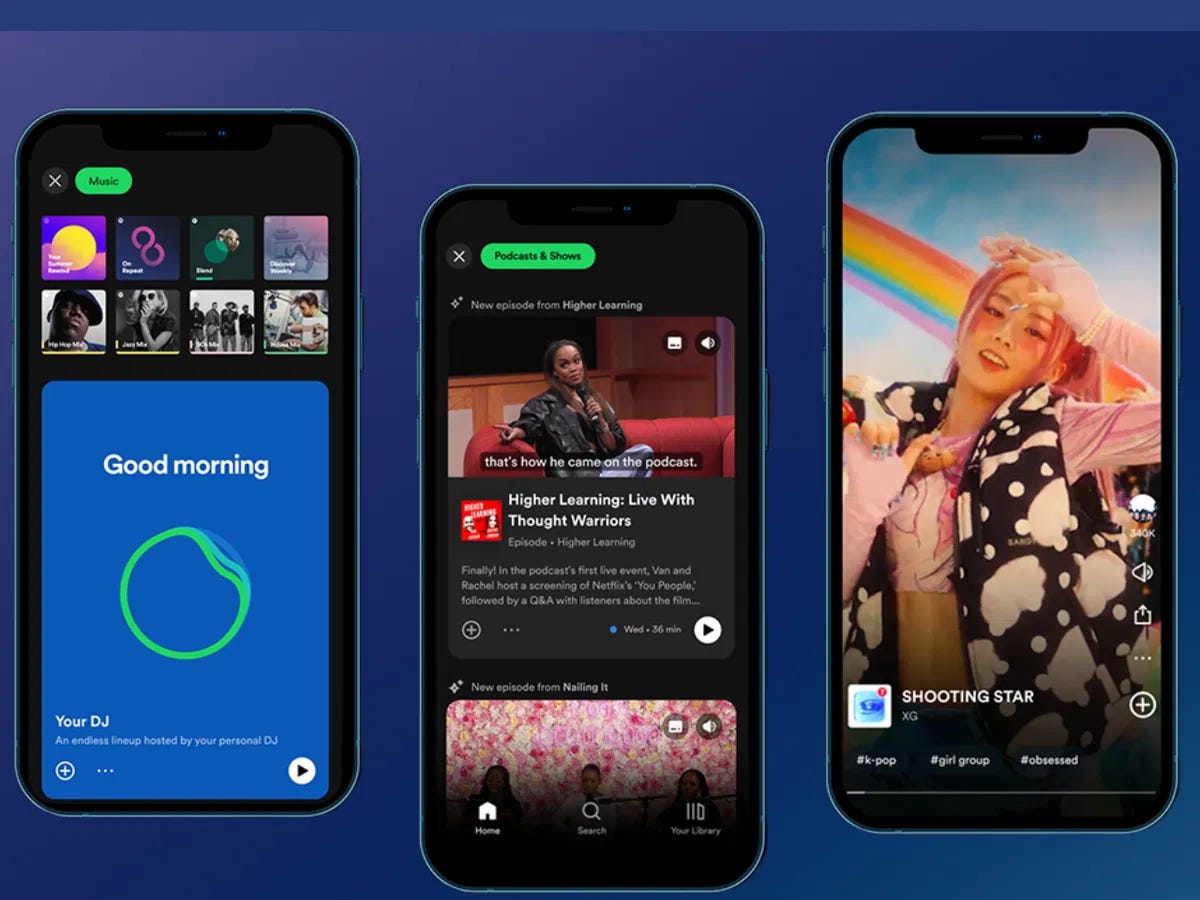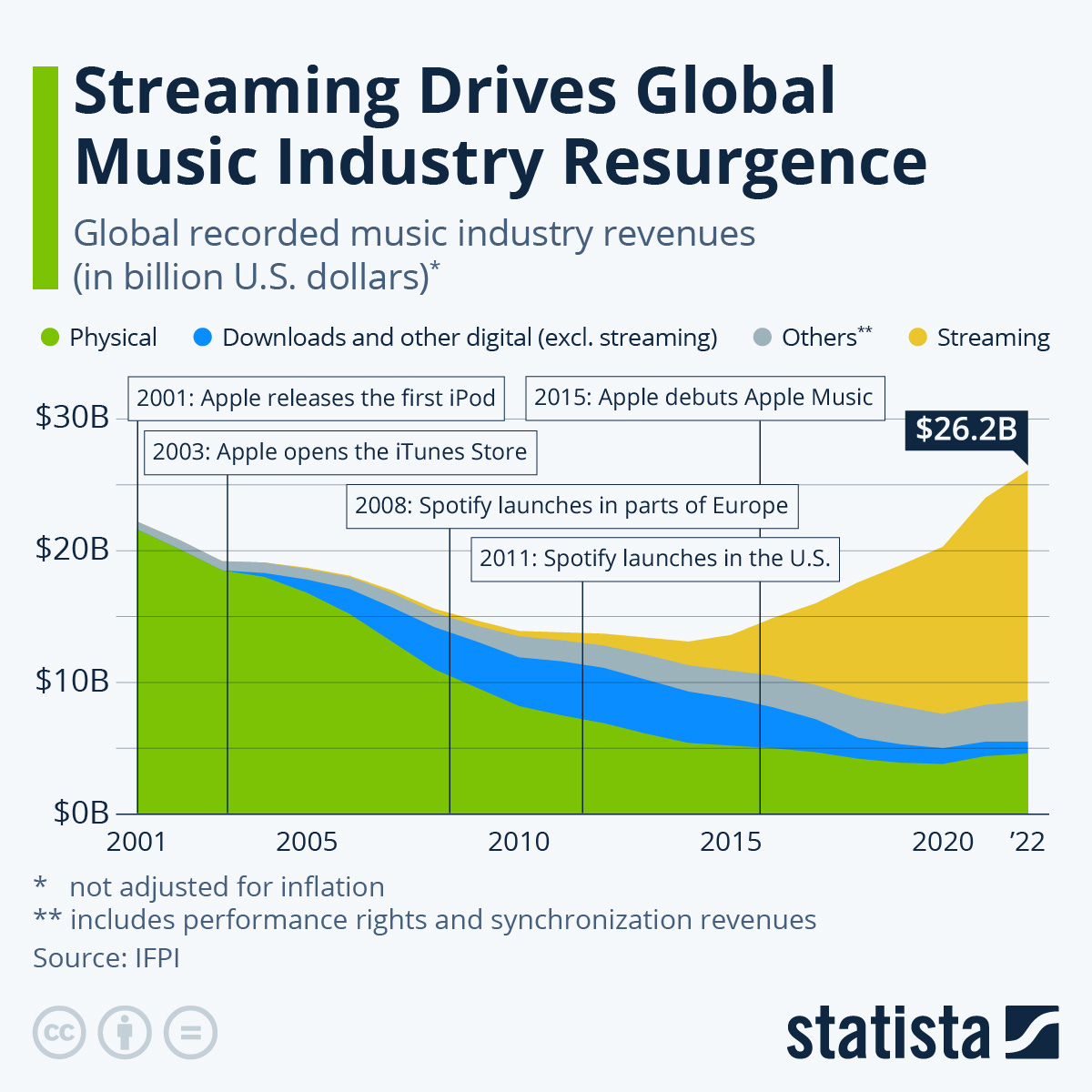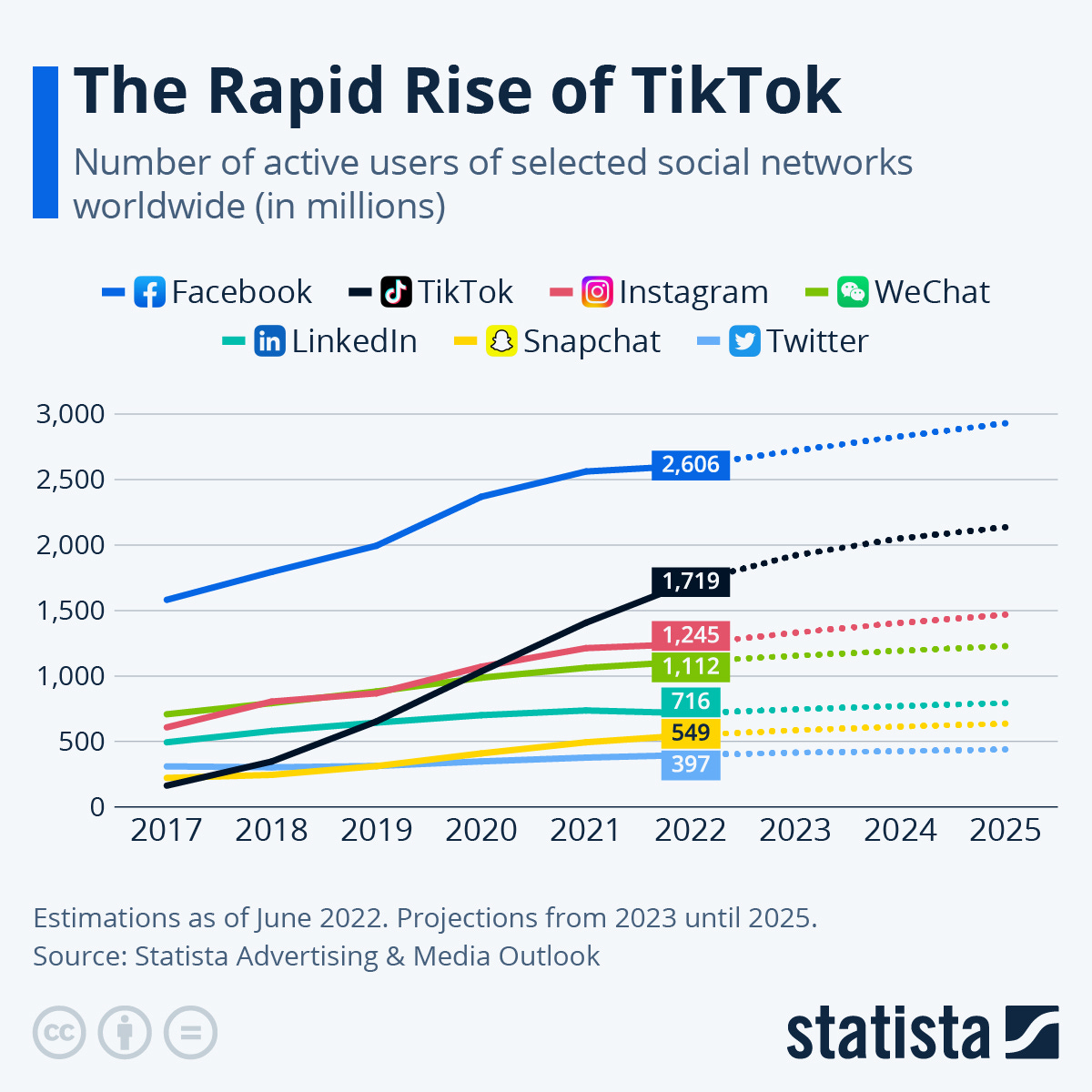Hey everyone 👋 — I’m Avirath. I learn a lot from analysing new products, thinking about new product strategies and my opinion on the markets/products for the future. I wanted to share this knowledge with my readers - that’s the motive behind this newsletter.
This article covers one of the most interesting product trends in recent years - algorithmically recommended feeds in short form viewing mode. Recently, Spotify changed their product UI to look like a feed - learn why and what changes with this.
If you are interested in receiving future content from me directly in your inbox, consider subscribing 👇.
Join the fun on Twitter.
I don’t use TikTok at all. I used to use Instagram till I wanted to do away with social media validation and the endless scroll of reels I’d fall prey to at times. A couple of weeks after I stopped using Instagram, I found myself hooked onto YouTube Shorts. I realised I wasn’t hooked to a platform as much as I was to the baby of new-age social media - short form reel like videos. That’s why when Spotify released their new Discovery feed inspired by the massive Tiktokification consumer apps are going through I wasn’t too surprised.
What is Spotify’s New Feed?
Spotify is undergoing a major makeover of its app's central homescreen, striving to enhance user convenience in discovering new and intriguing music and videos. The upcoming redesign features an emphasis on visually captivating elements and a smooth vertical scrolling experience, thereby transforming the static collection of album covers into a dynamic feed similar to TikTok and Instagram.
While a feed changes the way you interact with the product in terms of it becoming a scroll through medium, it shifts the unit of discovery from playlists/podcast thumbnails to individual pieces of content. This does have huge implications as I will detail later.
Before I dive into Spotify’s big product update, it’s important to know how Spotify even earns its money and how this plays into the larger context of things.
Spotify has 500M subscribers and about 12.7B dollars in revenue. Surprisingly, it keeps only 33% of the revenue from its subscriptions.

Spotify has paid north of 21B dollars till date to record labels, publishers, aggregators and collecting societies.
Spotify has no control over how much artists earn after the money is shared with record labels. It solely depends on the kind of contracts the artists take on with the labels or aggregators.
Spotify reports that the payout is heavily biased towards record labels and aggregators versus publishers where the payout is divvied up at 60-80% towards record labels.
As further context, this is how the relationship between labels and artists works:
An artist feels they’re talented or shows talent and are approached/approach a record label.
The record label invests in the potential of an artist by paying them an advance fee to record an album and in return own the music produced by the artist.
The record labels earn all the money off CD sales, streaming rights and other forms of distribution while having discussed some sort of royalty structure with the artist.
The Big Three record labels are Sony BMG, Universal Music Group and Warner Music Group that own about 80% of the music in the world. The way it’s worked till now is that Spotify has had to appease to these labels to make sure they keep their music on the platform. For example, Spotify’s inability to reach a contract settlement with a popular Bollywood music label led to them pulling a lot of top songs from the streaming platform lately.
However, the times - they are a changin. As seen in the graphic below, streaming now accounts for about 18-19B dollars of the 26.2B dollar revenue that music earns.
This shifts the centre of power towards Spotify who can use this leverage to possibly bring independent creators to Spotify and start exploiting its transition to a creator platform even more.
A New York Times report from 2018 states how Spotify has begun to cut direct deals with artists who are more than happy to agree to as it increases the pot by almost 50% of the cut that goes to labels.
With decentralised options growing due to cool blockchain tech and even AI generated music going mainstream, it won’t be long before artists of all kinds - pure musicians and AI geeks start working on a new world order cutting the middle men that are record labels.
Though cutting off record labels may seem so appealing for large artists who can afford marketing/distribution and develop relations with managers/fans, it may be disadvantageous for small artists who enjoy the synergy, investment and personal development record labels bring.
All in all, it becomes significantly important for Spotify to bet on creators and the cool evolving kids on the block to appease and increase its creator distribution and popularity.
What does the Tiktokification do for Spotify?
TikTok launched in 2016 after Instagram had surpassed 500 million users. The only way they’d be able to compete in the great online game is to do something different. Cue their product decision to build TikTok on a recommendation algorithm rather than a follower/following algorithm which gave them a massive distribution boost compared to any other platform. It’s likelier that there are a higher percentage people who like “Wes Anderson Art” or another specifically tagged set of reels than there are friends who follow someone. That’s what TikTok does. It levels the playing field for someone with 10 or 100,000 followers - both of the accounts can go viral. This solely led to its staggering growth as a creator-centric platform as the graph shows.
Now, as Spotify enters its “creator era”, it opens up its discovery via a new algorithmic feed to its 500 million users evening the reach its creators have to the world. Exploring the feed since it’s been released, I definitely feel it’s been easier to find songs I like with almost no friction with the scroll like UX.
Spotify’s old product design would only lead to positive feedback loops for top artists such as Drake or Taylor Swift who enjoy massive popularity and distribution otherwise as well. Most playlists and friends were likely to recommend popular artists who’d then get top searched for and most songs someone would get recommended would be from the same or similar artists.
With the new design, my liking for Radical Face that have about 2 million monthly listeners gets me recommended Milo Greene with around 1/5th the monthly listeners. It’s easy to see how artists are going to be placed more depending on the kind of content they produce rather than the popularity they carry otherwise.
Spotify recommendations drive close to half of all users’ streams. And when listeners decide to follow a creator, they listen to, on average, five times more of their music. That’s why discoveries on Spotify—unlike many other platforms—give creators so much more than just a fleeting moment of viral fame. Those meaningful, long-term connections are a key part of what makes Spotify a platform for professional and aspiring artists. - Gustav Söderström, Spotify Co-President and Chief Product & Technology Officer
Another interesting reason why Spotify may want to build heavy recommendation features is that it gets the power to collect data points on people’s listening habits and influence their activity. This gives them powerful bargaining power with labels or creators who will pay top dollar to be first among recommendations to listeners of a specific habit or style. This is also probably the reason Spotify keeps most social activity hidden such as followers of playlists - its because they want to hold the influencing power.
In relation to Podcasts
Through my podcast journey with Capercast, one of the biggest revelations that we found was posting short clips from exciting parts of episodes led to higher listen and retention rates. Similarly, Spotify would only have thumbnails or cover images displayed for podcasts earlier and judging a podcast by it cover could only lead to limited conversion. Having a swipe-through feed where the most interesting parts of conversations play dependent on individual preferences can lead to much higher conversion rates.
Podcasts are a big part of Spotify’s future since they earn the company a grass margin of 40-45% since there’s no labels or middlemen Spotify needs to pay for such content. Thinking about my YouTube Shorts habits, I realise that most of the Shorts I watch about a trend(Yes, I love the Wes Anderson edits) or about a show act as acquisition channels for such publications.
Spotify seems to be using a similar playbook to get people to listen to more long form content driving up total time spend and revenue they’d earn. Here’s an example of one of my favourite podcasters - Shaan Puri - executing this strategy on Instagram via reels.
Finally, building with such a creator centric approach helps Spotify become the central hub through which creators can conduct merchandise and ticket sales as well.
If you have any feedback or suggestion, do loop it in the comments section. I’ll be sure to take a look at it and even reach out to discuss if possible. You can reach me at avirathtibrewala@gmail.com for any other queries or discussions.








